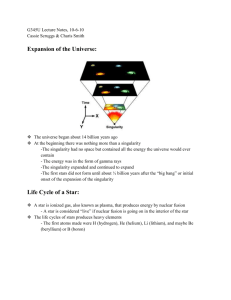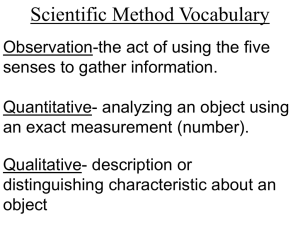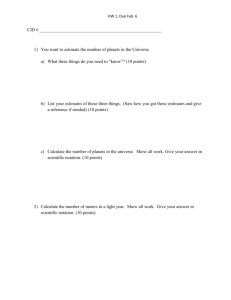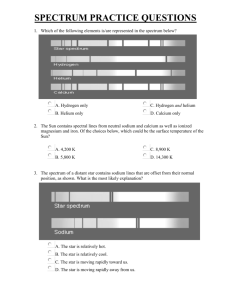Activities 5, 6 and 7
advertisement
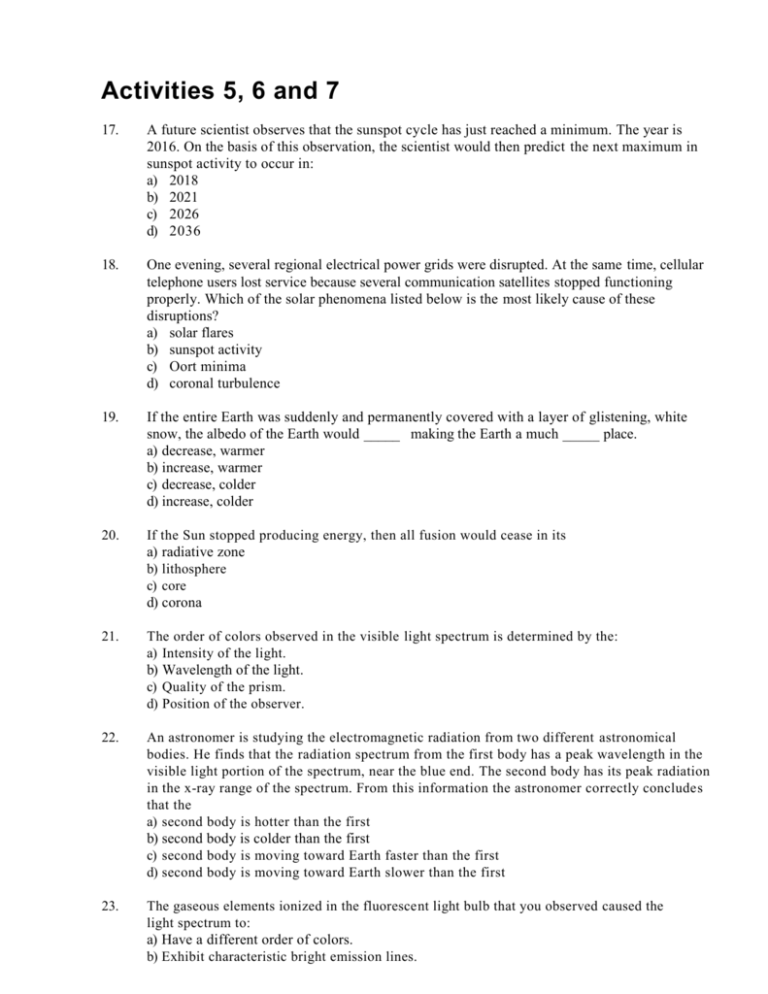
Activities 5, 6 and 7 17. A future scientist observes that the sunspot cycle has just reached a minimum. The year is 2016. On the basis of this observation, the scientist would then predict the next maximum in sunspot activity to occur in: a) 2018 b) 2021 c) 2026 d) 2036 18. One evening, several regional electrical power grids were disrupted. At the same time, cellular telephone users lost service because several communication satellites stopped functioning properly. Which of the solar phenomena listed below is the most likely cause of these disruptions? a) solar flares b) sunspot activity c) Oort minima d) coronal turbulence 19. If the entire Earth was suddenly and permanently covered with a layer of glistening, white snow, the albedo of the Earth would _____ making the Earth a much _____ place. a) decrease, warmer b) increase, warmer c) decrease, colder d) increase, colder 20. If the Sun stopped producing energy, then all fusion would cease in its a) radiative zone b) lithosphere c) core d) corona 21. The order of colors observed in the visible light spectrum is determined by the: a) Intensity of the light. b) Wavelength of the light. c) Quality of the prism. d) Position of the observer. 22. An astronomer is studying the electromagnetic radiation from two different astronomical bodies. He finds that the radiation spectrum from the first body has a peak wavelength in the visible light portion of the spectrum, near the blue end. The second body has its peak radiation in the x-ray range of the spectrum. From this information the astronomer correctly concludes that the a) second body is hotter than the first b) second body is colder than the first c) second body is moving toward Earth faster than the first d) second body is moving toward Earth slower than the first 23. The gaseous elements ionized in the fluorescent light bulb that you observed caused the light spectrum to: a) Have a different order of colors. b) Exhibit characteristic bright emission lines. c) Be shifted towards shorter wavelengths. d) Be dimmer and less distinct Refer to the diagram below to answer questions 24-26. 4 24. 25. Which of the four stars shown (A, B, C, D) has the largest diameter? a) A b)B c)C d)D If all four stars were equidistant from the Earth, which stars would appear to have the same brightness in the night sky? a) A and C b) C and D c) none would appear the same d) all would appear the same 26. If star C were 4 times as far away from Earth as Star D, then star C would have an apparent brightness to an Earth observer that was a) four times that of star D b) the same as star D c) one-fourth that of star D d) one-sixteenth that of star D 27. Four stars described below all reside on the main sequence. Which will have the shortest expected life span? Star Surface Temperature (K) Luminosity (relative to Sun) Diameter (solar diameters) Mass (solar masses) A 10,300 50.8 3.1 3.07 B C D 5300 2300 25300 75.8 7.5 2121 10.8 1.4 7.3 3.0 1.78 10.9 Teocher Commentary Answer Key 17. 18. 19. b a d 20. c 21. 22. 23. 24. 25. 26. 27. b a b b b d d

